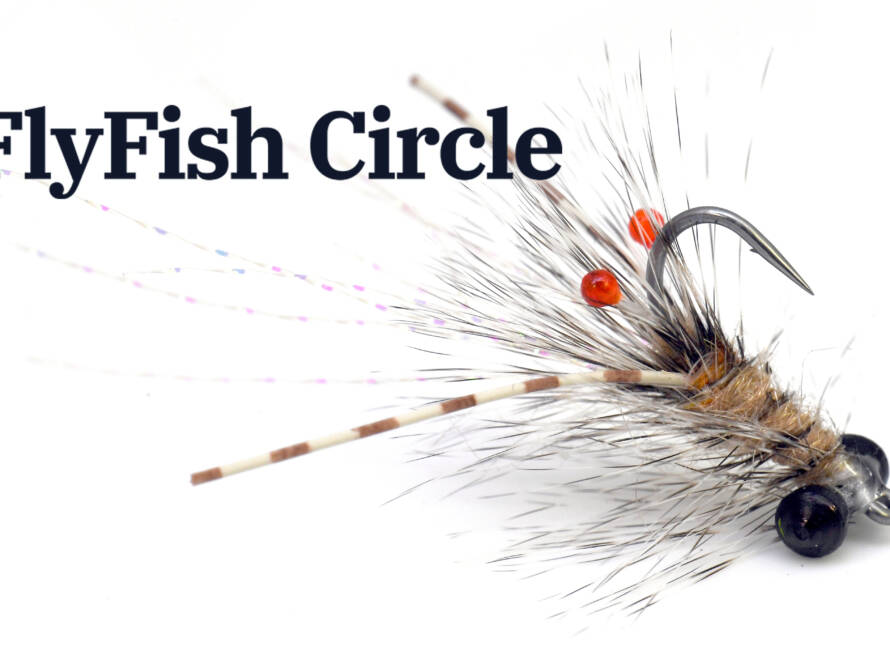Cutthroat Kutling
There are plenty of prey items along the coastal shores and – not least – plenty of flies that imitate them effectively. At certain times of the year, gobius are among the most prevalent prey items – and, at the same time, one of the seatrout’s most favoured. Here’s a simple but proven neo-classic pattern that imitates the gobius excellently.
BY RASMUS OVESEN
The ice-cold gasp of winter has shrouded the many tree-clad hills, fields, and meadows along my local fjord in an innocent-white glow. It’s barely light out, but I’ve already entered the cold, brackish water. Each breath I take condenses in front of my eyes like thick tobacco smoke and blends effortlessly with the morning mist. My otherwise lively fingers are already starting to suffer under the near freezing temperatures, but it hardly registers with me. Deeply concentrated, I am covering the edges along a neatly delimited, lush-green – almost blanket-like patch of weeds.
A multitude of small prey items such as Gammarus, Idoteidae, sticklebacks, and not least countless sand-colored gobius are whirling around and darting out of my way, frantically seeking refuge inside the protective sponge-like wall of thread weeds.
“There’s got to be fish around here”, I think to myself mechanically and proceed to place another careful cast across the dead-calm surface film.
With discrete stubbornness, the sun has slowly burned a hole in the morning mist, and I now find myself bathed in a pale, intrusive light. Then, suddenly, the line comes tight, the fly rod bends elegantly, and electrifying pulses emanate through the line. Shortly after, the first seatrout of the day thrashes around at the bottom of my knotless landing net; a lightly coloured 50-centimetre fish in great condition.
The thin leader extends limply out of the corner of fish’ jaws, with the Cutthroat Kutling buried somewhere deep inside its mouth. As I force the jaws open and retrieve the fly with my forceps, I can’t help but notice that its throat is full of small sand-coloured gobius. The hungry fish must have inhaled them just before eating my fly.
I gently release the fish, draw a sigh of relief and continue fishing with a sense of renewed optimism and enthusiasm. Three hectic hours later, I have covered the full length of the weed patch. In total, I’ve landed six well-nourished seatrout including a beautiful, chrome and hard fighting 75-centimetre stunner. Despite having fished with two flies all the time, and having experimented a bit with different patterns, I’ve caught all my fish on the now extremely ruffled and chewed up Cutthroat Kutling.
With me on my way to the car, in my right hand, I have a chrome seatrout of about 45 centimetres that I’ve decided to keep for a delicious meal. Like the other fish this morning, it fell headlong for the fly and struck with incredible and resolute determination.
When I arrive home, clean the fish and study the contents of its distended stomach, I’m not the least surprised to find a wealth of small gobius. Most of them are quite undigested, and a few of them look like they must have been swallowed right before the treacherous Cutthroat Kutling came into sight. They probably were!

The Cutthroat Kutling
I came up with the idea for the Cutthroat Gobius some 15 years ago after having bought a few Coc
de Leon capes. At the time, I was very fond of palmered flies with relatively voluminous and pulsating profiles, and the first fly that I tied with the new Coc de Leon feathers, unsurprisingly, was a palmer fly.
The idea was to make a gobius imitation (kutling is Danish for gobius); one that I could use in my local fjords. However, I wanted it to have a fairly slender profile, so it didn’t look quite as “brush cleaner”-like as many palmer flies do.
The materials I cracked out were all meant to capture and underpin the colour nuances of the gobius and provide the fly with the right volume, transparency, and life. The materials included fox, grizzly hackles, tan synthetic dubbing, and the speckled Coc de Leon feathers. Furthermore, I provided the fly with a fiery red head made out of sparkly Firestar Dubbing, which was supposed to work as a focus point and – once brushed out, was intended to fixate and collapse the front hackle a little to give the fly a more streamlined appearance.
By brushing the fly heavy-handedly with a piece of Velcro – so that all the hackle fibres were softened up and the synthetic dubbing became even more sparkly – the fly would become livelier. And by soaking the fly with saliva, pressing all the hackle and dubbing fibres aerodynamically down along the length of the fly and leaving it to dry, the fly would assume a more realistic profile.
I typically fish the fly in an open loop knot, and I retrieve it with relatively abrupt strips that provide the fly with a lightly jigging action. Some of the flies I mount with an action disc (Petitjean Magic Head), which makes them flutter and swim when using long and even strips.
I believe the fly has proven particularly effective because it combines a series of important features: It pulsates and hovers really well in the water; it has a bit of glow to it and some transparency; it has an incorporated strike-triggering focus point; and it has much the same profile and colour nuance as the gobius – a prey item that is at the top of the seatrout’s menu card during big chunks of the season.
Cutthroat Kutling Material List
Hook: Ahrex NS110 #2-6
Tying Thread: Veevus G02, White
Tail: Fox and Krystal Flash (Bonefish Tan)
Rib: Copper Thread
Body: Fox underfur and Tan Ice Dubbing
Palmer Hackle: Grizzly Saddle
Front Hackle: Coc de Leon Saddle
Head: Red Firestar Dubbing







